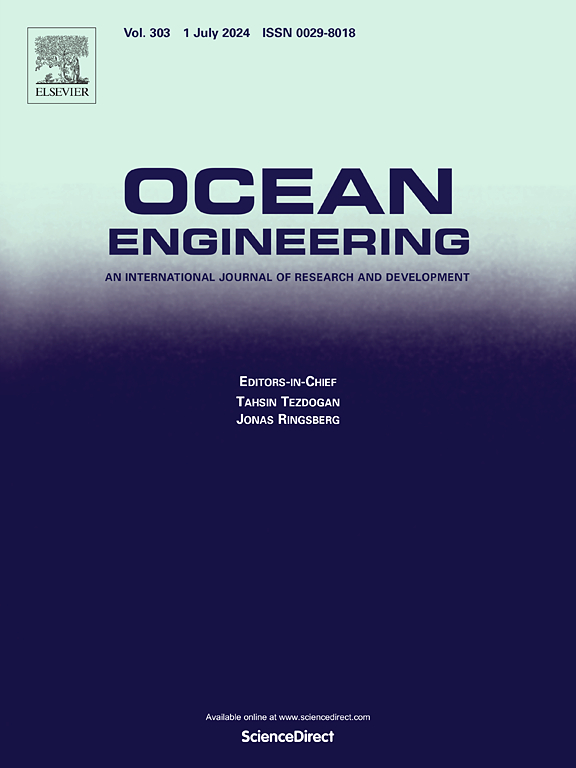Digital twin-enabled structural real-time monitoring for blended-wing-body underwater gliders
IF 5.5
2区 工程技术
Q1 ENGINEERING, CIVIL
引用次数: 0
Abstract
As innovative marine systems, Blended-wing-body underwater gliders (BWBUGs) have become crucial components in maritime operations. However, during autonomous missions beyond shore-based support infrastructure, BWBUGs face significant challenges from complex marine environmental conditions. Thus, real-time structural monitoring and prediction become essential for ensuring operational stability. To address these requirements, this study develops a digital twin-enabled framework for BWBUG structural monitoring, integrating three key components: data generation and collection, sensor layout optimization, rapid prediction and visualization. Specifically, the framework implementation initiates with baseline dataset generation employing numerical simulations and experiments, with numerical models calibrated iteratively against experimental measurements. Subsequently, the Kriging-assisted discrete global optimization (KDGO) algorithm is employed for optimal strain sensor placement. The final phase implements a predictive model between sparse sensor inputs and full-field strain data, combining isometric mapping (Isomap) dimensionality reduction with radial basis function (RBF) surrogate modeling. Concurrent virtual visualization techniques are implemented for analysis of structural responses. Experimental validation confirms the framework's effectiveness in BWBUG structural real-time monitoring, and its data-driven architecture enables adaptation to other marine equipment requiring real-time monitoring.
混合翼体水下滑翔机的数字双启用结构实时监测
作为一种创新的海洋系统,混合翼体水下滑翔机(BWBUGs)已成为海上作战的重要组成部分。然而,在岸基支持基础设施以外的自主任务中,BWBUGs面临着复杂海洋环境条件的重大挑战。因此,实时结构监测和预测对于确保运行稳定性至关重要。为了满足这些需求,本研究开发了一个用于BWBUG结构监测的数字孪生框架,集成了三个关键组件:数据生成和收集、传感器布局优化、快速预测和可视化。具体而言,该框架的实施始于采用数值模拟和实验的基线数据集生成,并根据实验测量迭代校准数值模型。随后,采用kriging辅助离散全局优化(KDGO)算法对应变传感器进行优化布置。最后阶段实现了稀疏传感器输入与全场应变数据之间的预测模型,将等距映射(Isomap)降维与径向基函数(RBF)代理建模相结合。采用并行虚拟可视化技术进行结构响应分析。实验验证了该框架在BWBUG结构实时监测中的有效性,其数据驱动的体系结构能够适应其他需要实时监测的船舶设备。
本文章由计算机程序翻译,如有差异,请以英文原文为准。
求助全文
约1分钟内获得全文
求助全文
来源期刊

Ocean Engineering
工程技术-工程:大洋
CiteScore
7.30
自引率
34.00%
发文量
2379
审稿时长
8.1 months
期刊介绍:
Ocean Engineering provides a medium for the publication of original research and development work in the field of ocean engineering. Ocean Engineering seeks papers in the following topics.
 求助内容:
求助内容: 应助结果提醒方式:
应助结果提醒方式:


